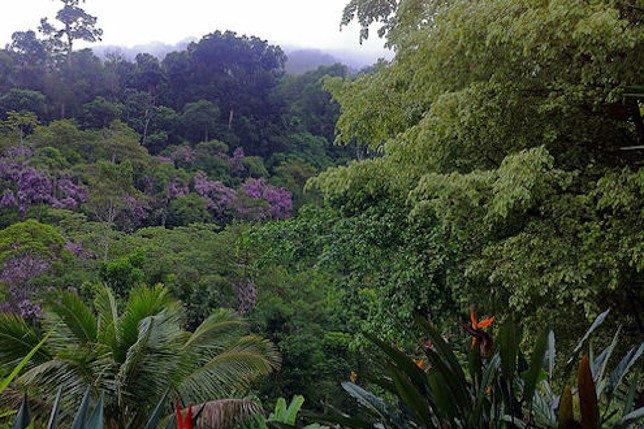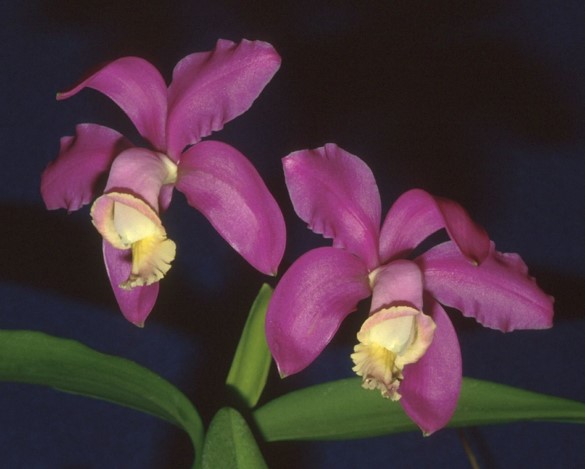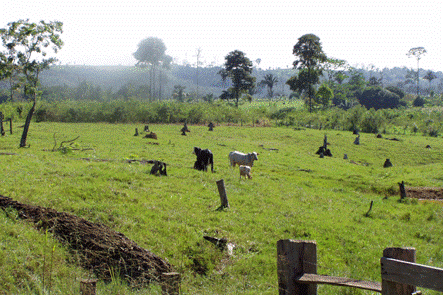
Psssst . . . want to really protect endangered orchids?
Orchid Conservation comes in many flavors. It can, for example, be educational and introduce the public to the beauty and uniqueness of just one of nature’s truly remarkable gifts. A wise person said that we tend to protect what we know and love.
One way of contributing to orchid conservation is to participate in efforts on a local level. Without a doubt, the educational value of the annual Hexalectris Citizen Scientist survey is a prime example. How truly remarkable it is that these fragile flower spikes, narrower than a pencil, can emerge from a rugged soil surface next to tall cedars. Botanists tell us that seeds of these orchids can develop underground for as much as twenty years before emerging and blooming one summer. To learn more about this complex ecosystem, the Smithsonian’s North American Orchid Conservation Center conducts joint research projects with universities in Texas to study the fungi that supports these orchids in their life underground. The more we learn about the life cycle of these orchids, the more we increase our broader understanding of these mysteries of nature.
Local societies support conservation
Orchid enthusiasts who are members of orchid societies are perhaps more familiar with another aspect of conservation. Many member societies of SWROGA, as well as other societies, have financially supported the work of the Orchid Conservation Alliance or Rainforest Trust to protect critical habitats. Two popular conservation projects SWROGA societies financially supported have acquired areas of rain forest which now serve as special reserves for native orchids. One of these projects is in Ecuador, where the Dracula species has one of its few remaining habitats. The second project is the Serra Bonita reserve, part of the last remaining remnants of the Atlantic Forest in Brazil, once rich with Cattleya species such as Cattleya harrisoniana.

In addition to these, there are many other projects, such as the botanical gardens with ex-situ orchid species in tropical areas where originally found, and even the Million Orchid Project, whose goal is to establish seedlings of local orchid in public urban cities that were built over the species’ original habitat. These programs all represent ways that orchid lovers can actively participate in a conservation effort. It is sad to hear about more and more species being lost each day. The act of taking a proactive stance in any conservation effort can feed the soul of those of us who lament these losses.
Protecting endangered plant and animal species around the world
For many of us long
time growers, our first, and maybe only exposure to orchid conservation, was through
the protection program called CITES (Convention
on International Trade in Endangered Species of Wild Fauna and Flora). It is a multilateral treaty, and, as its name
says, was setup to protect endangered plants and animals traded around the
world. It was drafted in 1963 from a resolution at a meeting of members of the
International Union for Conservation of Nature (IUCN) and went into effect in 1975. The intent was to protect endangered species
from excessive commerce that would threaten their survival. Originally,
according to Wikipedia, its intent was to stem the traffic in animal furs to
the West. As demand increased for part of other species like the shark fins in
China, the list has expanded to thousands of species deemed to be endangered.
Unfortunately, this program had been a failure as far as conservation is concerned. Although it has helped prevent certain trade transactions, the organization’s practice of destroying confiscated plants seemed contradictory to the organization’s mission.
The sad truth is that if there is a demand for something, someone will always find a way to supply that demand.
In the end it was not CITES that stemmed the fur trade, but rather the power of organizations and individual people acting to wake up the public to the horrors involved in this market. Because of public pressure from environmentalists it gradually was no longer fashionable to wear furs, and the demand declined.
What kind of public pressure will bring about a decreased demand for products which destroy orchid habitats? Surely there must be an answer to the terrible news that 37 million acres of habitat have been lost to deforestation in tropical forests around the world in 2017, and that complete extinction of thousands of unknown species of orchids appears inevitable. Reports like this are generally presented in the news as “just the way it is” with rarely any thought as to what is driving it. That is, of course, by design for as long as we think nothing can be done, the demand for deforestation will be allowed to increase unquestioned.
The key to conservation is an educated public
The needed change is coming about through knowledge. As more and more people discover the health benefits of eating a plant-based diet, they bring about the additional benefit of literally saving the planet. It turns out that the number one cause of deforestation, agricultural expansion in support of the meat industry, is being brought into the spotlight in a new way. We are gaining an awareness that the meat industry is an extremely inefficient use of the Earth’s resources. It takes up to 15 pounds of grain to make 1 pound of beef; it takes 70% of our agricultural land to support the livestock industry. And then there is the matter of massive amounts of greenhouse gas emissions into our atmosphere, along with untreated animal waste polluting our environment. And finally, animal agriculture places an enormous, and unsustainable demand on the world’s supply of fresh water.

Thousands of acres of rainforest are lost every month due to animal agriculture 
Soy production to meet the needs of feeding livestock also leads to loss of natural habitats
The younger generations are discovering the increasing varieties of foods and flavors from a plant-based diet, and they know that they can get the required protein from non-animal sources. They recognize that they will need a sustainable world for themselves and for future generations. The fact that a plant- based diet is also less expensive serves as an additional motivator to cash-strapped young people.
The younger generations will lead the way
Just as wearing furs has becoming unfashionable, even shameful in the eyes of many, so will consuming animal products gradually become a questionable practice. As more people become aware, they will make the needed changes to ensure a future for their children and grandchildren. As the demand for meat products decreases, deforestation will slow down, and gradually the rain forests will reclaim lost territory.
When this change comes, it will come quickly, and we will see hope for what is left of our endangered species. When we all make these changes, one orchid lover at a time, we will then really be protecting our endangered species.
Psssst . . . spread the word.
